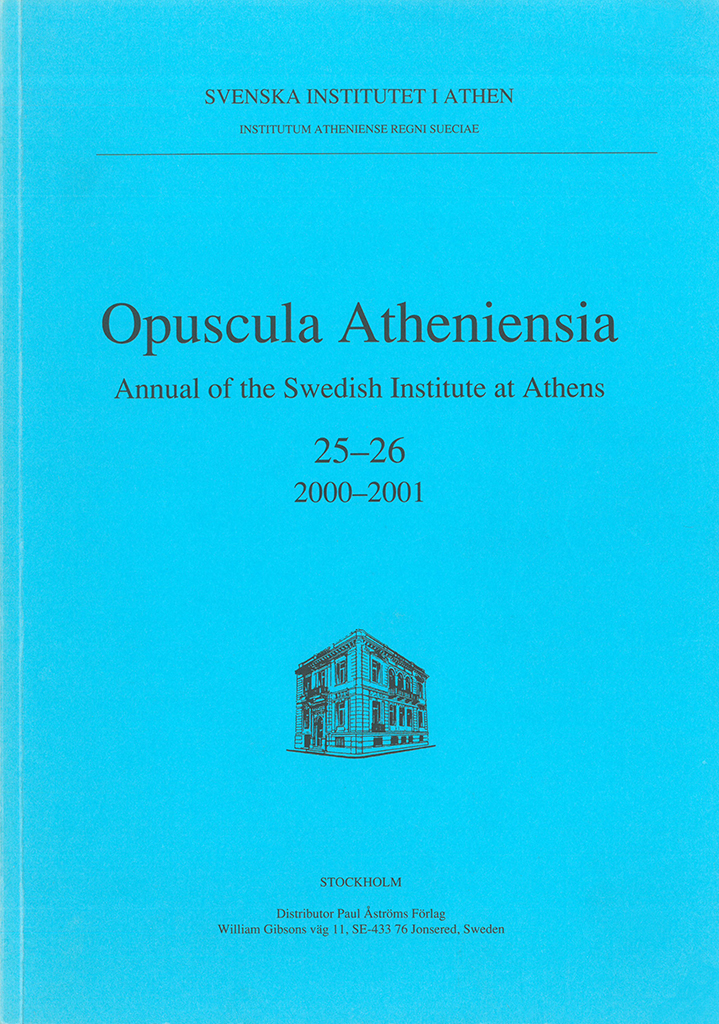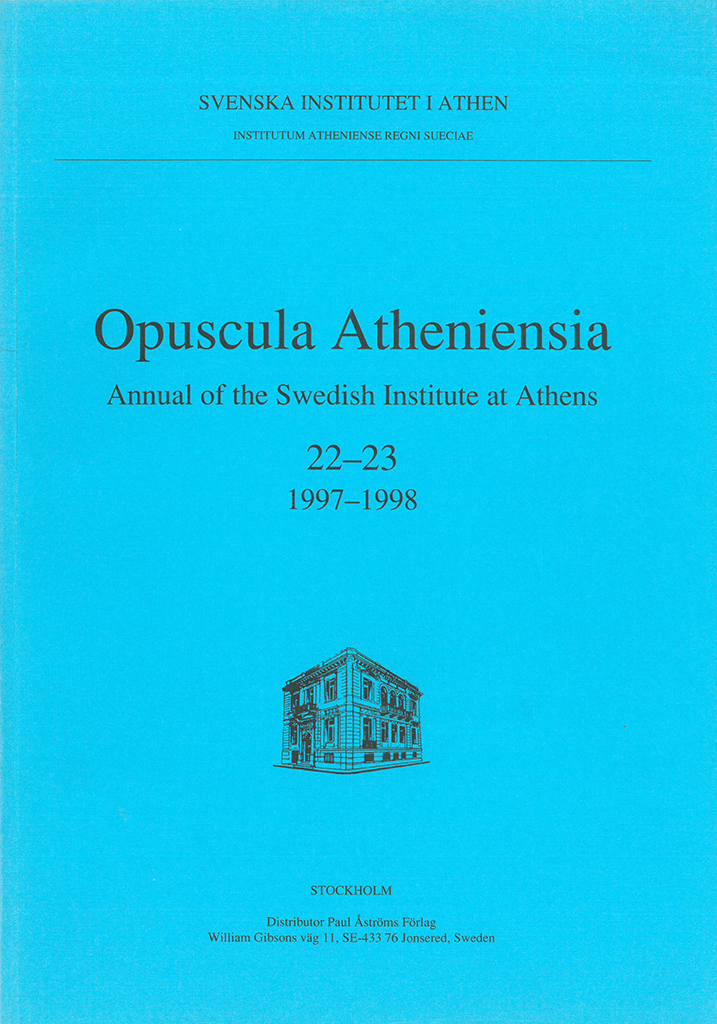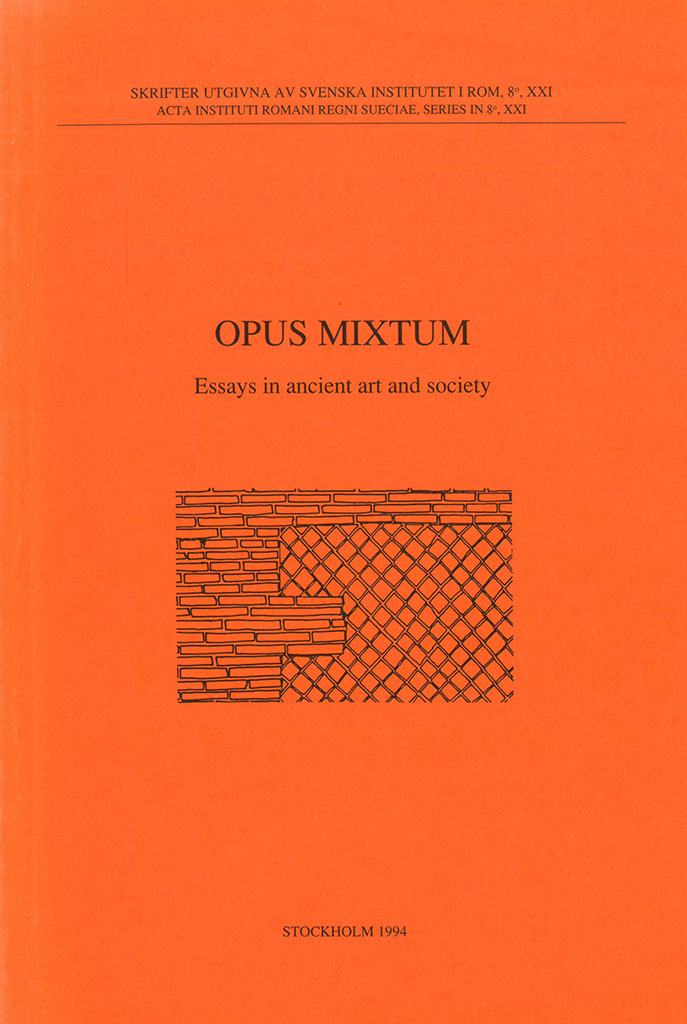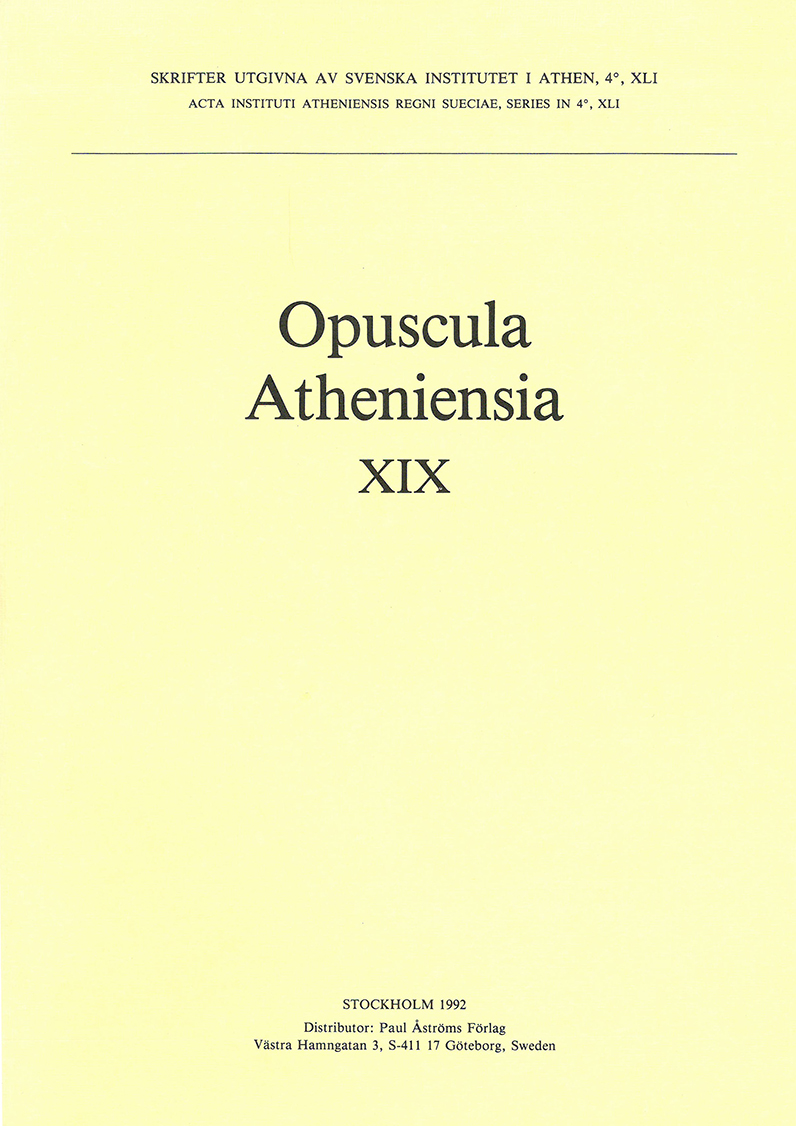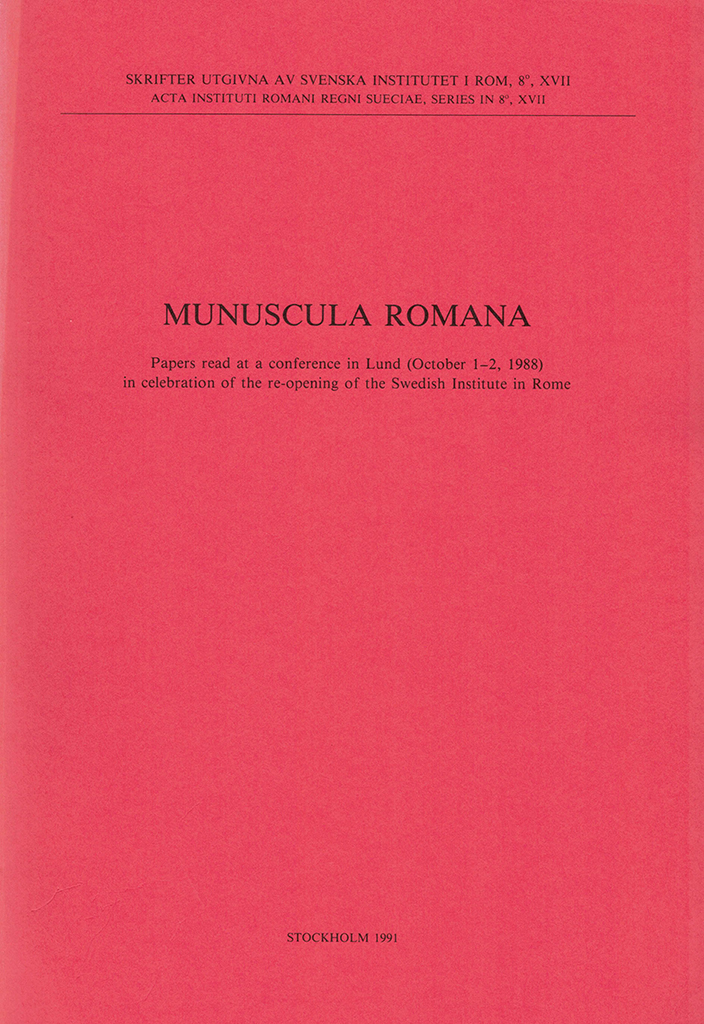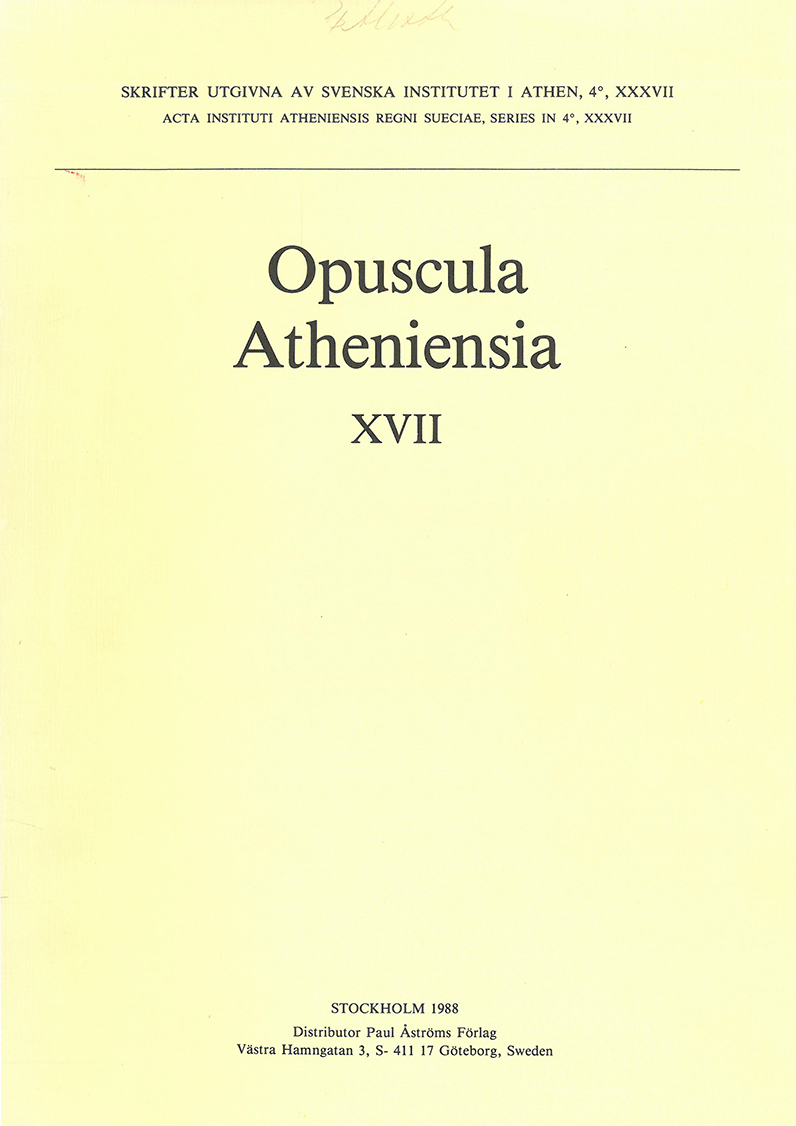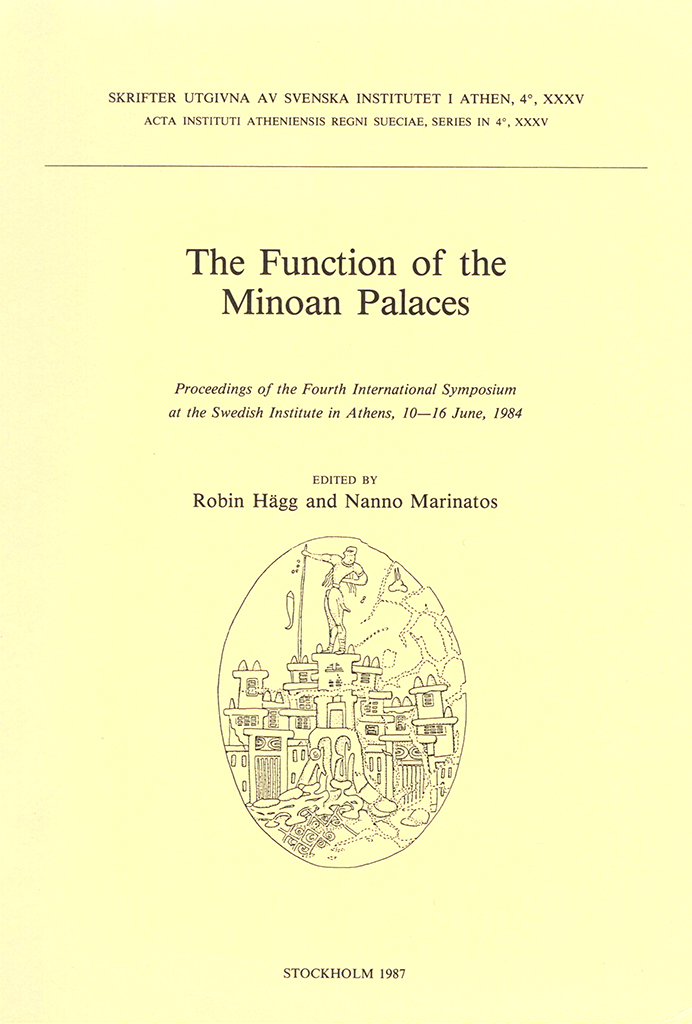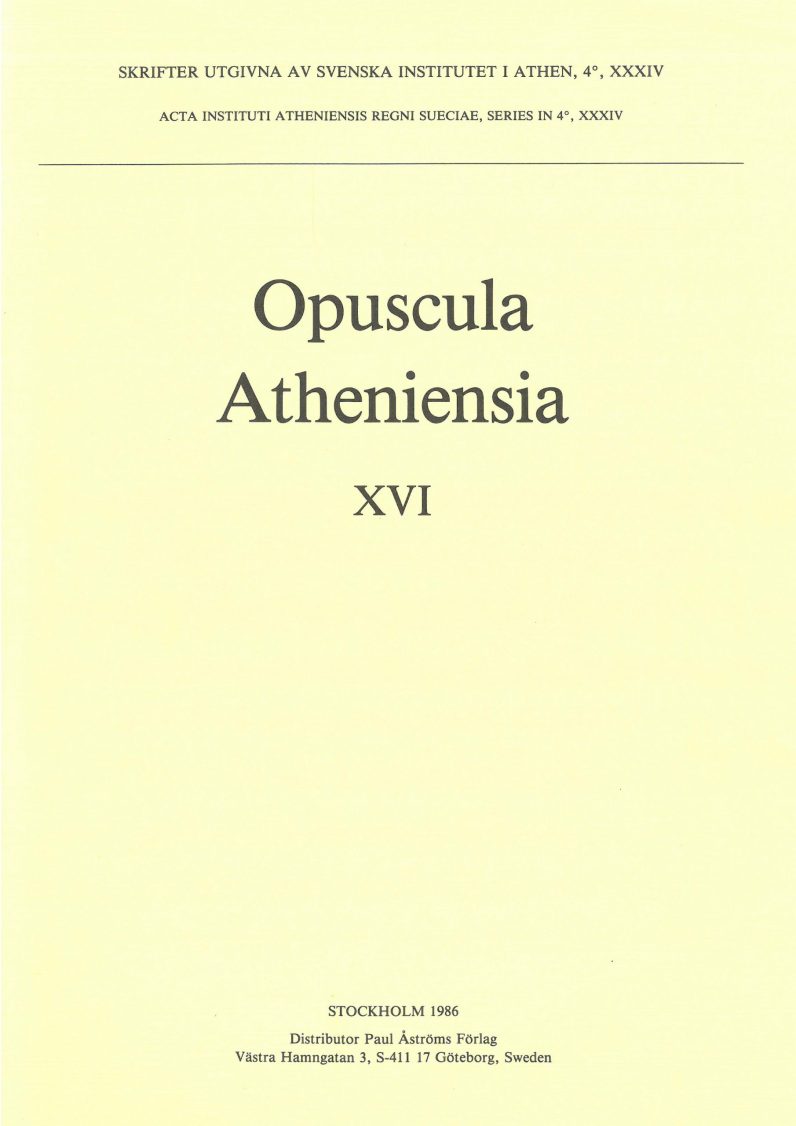Published by the Swedish Institute at Athens. Distributed by Astrom Editions. Swedish excavations at Sinda, Cyprus. Excavations conducted by Arne Furumark 1947–1948 Arne Furumark & Charles M. Adelman, with contributions by Paul Åström, Nils-Gustaf Gejwall & Hans Henning von der Osten Abstract When Arne Furumark was entrusted with writing the Late Bronze Age summary volume for the Swedish Cyprus Expedition, he realized that a habitation site was needed in order to clarify problems associated with the last phases of that period. As neither the French nor the Cypriot excavations at Enkomi had yet been published he decided to find his own site: he scouted several, but settled on Sinda because recent illicit digging there had thrown up sherds of a sort never before seen on the island, namely Mycenaean IIIC1b. He conducted two short excavation seasons but the control excavation he planned was aborted when he received notice from Cypriote authorities that there was large scale destruction of the site. Although there is evidence of earlier and later habitation at Sinda, the most important is the Late Bronze Age fortified town (probably built along the copper trading route), with its three phases: Sinda I, II and III. Sinda I, which…
Published by the Swedish Institute at Athens. Distributed by Astrom Editions. Opuscula Atheniensia. Annual of the Swedish Institute at Athens 25–26, 2000–2001 Contents Therese Åkerstedt, ‘Hellenistic-Roman chamber toms at Milas: Swedish excavations 1938’, pp. 9–23 Yvonne Backe-Forsberg, Christina Risberg & Yannis Bassiakos, ‘Metal-working at Asine. Report on the remains of iron production from the Barbouna area and the area east of the Acropolis’, pp. 25–34 Katie Demakopoulou, Nicoletta Divari-Valakou, Paul Åström & Gisela Walberg, ‘Work in Midea 1997–1999: excavation, conservation, restoration’, pp. 35–52 Niklas Hillbom, ‘Minoan and Eastern Mediterranean games and game boards: a history of research’, pp. 53–65 Kerstin Höghammar, ‘A note on the border conflict between Argos and Sparta in the second century B.C.’, pp. 67–70 Petra Pakkanen, ‘The relationship between continuity and change in Dark Age Greek religion: a methodological study’, pp. 71–88 ‘Introduction: Mycenaean pictorial pottery’, p. 89 Vassos Karageorghis, ‘The Mycenaean pottery of the pictorial style: achievements and perspectives’, pp. 91–93 Hans Mommsen & Joseph Maran, ‘Production places of some Mycenaean pictorial vessels: the contribution of chemical pottery analysis’, pp. 95–106 Lucia Vagnetti, ‘Preliminary remarks on Mycenaean pictorial pottery from the central Mediterranean’, pp. 107–115 Miscellanea Evangelos Kyriakidis, ‘Pithos or baetyl? On the interpretation of…
Published by the Swedish Institute at Athens. Distributed by Astrom Editions. Opuscula Atheniensia. Annual of the Swedish Institute at Athens 22–23, 1997–1998 Contents Marie-Françoise Billot, ‘Sanctuaire et cultes d’Athéna à Argos’, pp. 7–52 Hélène Borrman, Mascot Fjaestad-Seger, E. Urban Engström & Paul Åström, ‘A dental radiographic examination of a Late Bronze Age skull from Kition’, pp. 53–56 Katie Demakopoulou, Nicoletta Divari-Valakou, Paul Åström & Gisela Walberg, ‘Excavations in Midea 1995–1996’, pp. 57–90 Johan Flemberg, ‘An Anadyomene in the Milles Collection’, pp. 91–101 Barbro Santillo Frizell, ‘Monumental building at Mycenae. Its function and audience’, pp. 103–116 Jane F. Lloyd, ‘The Minoan hall system and the problem of an entrance to the South House at Knossos’, pp. 117–140 G.H.R. Wright, ‘Puer aeternus in prehistoric Cyprus’, pp. 141–146 Miscellanea Göran Henriksson & Mary Blomberg, ‘Petsophas and the summer solstice’, pp. 147–151 Penelope A. Mountjoy, ‘An octopus stirrup jar from Kalymnos’, pp. 152–154 In memoriam Alfred Westholm (written by Paul Åström) (p. 155) Erik Holmberg (written by Paul Åström) (p. 156) Book reviews Henrik Gerding, ‘P. James et al., Centuries of darkness. A challenge to the conventional chronology of Old World archaeology‘, pp. 157–160 Gunnel Ekroth, ‘C.M. Antonaccio, An archaeology of ancestors. Tomb cult…
Published by the Swedish Institute of Classical Studies in Rome. Distributed by Astrom Editions. Opus Mixtum. Essays in ancient art and society Edited by Eva Rystedt, Charlotte Scheffer and Charlotte Wikander Abstract Fifteen papers on various aspects of ancient art and society are gathered in this volume. They deal with the choice of moment depicted in the Parthenon frieze, the use of the Greek architectural orders in political propaganda, and the “programme” of the relief plaques from zone F at Acquarossa which is suggested to be celebrations connected to the ruler. The architectural layout of a well-temple in Sardinia is interpreted as an iconographic message of the cult of Tanit-Astarte. The significance of the horse in connection with death and the various types of female deities connected with horses in Archaic Greek religion are discussed, as well as the image of Artemis Ephesia and its connection with the mysteries of the goddess, the epithet Ambologera (“Delayer of old age”) attributed to Aphrodite, and the role of women in Roman religion. A white-ground lekythos by the Achilles Painter with the “mistress-and-maid” motif associated with music-making is analysed. A reconstruction of the Laocoon group, especially regarding the positions of the serpents is…
Published by the Swedish Institute at Athens. Distributed by Astrom Editions. Opuscula Atheniensia 19 Contents Carl Nylander, ‘Sture Brunnsåker, 1925–1978’, p. 9. Paul Åström, Katie Demakopoulou, Nicoletta Divari-Valakou & Peter M. Fischer, ‘Excavations in Midea, 1989–1990’, pp. 11–22. Gisela Walberg, ‘Excavations on the Lower Terraces at Midea’, pp. 23–39. Birgitta Bergquist, ‘A particular, Western Greek cult practice? The significance of stele-crowned, sacrificial deposits’, pp. 41–47. Mary Blomberg, ‘The meaning of Χελιδών in Hesiod’, pp. 49–57. Robin Hägg & Gullög C. Nordquist, ‘Excavations in the Levendis sector at Asine, 1989. A preliminary report with an appendix on the animal bones by Katrin Moberg’, pp. 59–68. Tullia Linders, ‘The Delian temple accounts: some observations’, pp. 69–73. Alexandros Mazarakis Ainian, ‘Nichoria in the south-western Peloponnese: Units VI-1 and IV-5 reconsidered’, pp. 75–84. Erik Østby, ‘Der dorische Tempel von Pherai’, pp. 85–113. Paul Rehak, ‘Minoan vessels with figure-eight shields: antecedents to the Knossos throneroom alabastra’, pp. 115–124. Eva Rystedt, ‘Notes on the rattle scenes on Attic Geometric pottery’, pp. 125–133. Berit Wells, ‘The walls of Asine’, pp. 135–142. Charlotte Wikander, ‘Pomp and circumstance. The procession of Ptolemaios II’, pp. 143–150. Örjan Wikander, ‘Archaic roof-tiles: the first (?) generation’, pp. 151–161. Miscellanea Åke Åkerström (†),…
Published by the Swedish Institute of Classical Studies in Rome. Distributed by Astrom Editions. Munuscula Romana. Papers read at a conference in Lund (October 1–2, 1988) in celebration of the re-opening of the Swedish Institute in Rome Edited by Anne-Marie Leander Touati, Eva Rystedt & Örjan Wikander. Preface In October 1988, the Swedish Institute in Rome was reopened after a period of renovation. From the point of view of Classical scholarship in Sweden, this reopening was an event that called for celebration: thus a symposium was held in Lund, on the initiative of the Department of Classical studies at the University, in collaboration with the South Swedish chapter of the Society of Friends of the Institute (October 1–2, 1988). The aim of the symposium was to give an idea of the current range of Swedish scholarship within the Italic and Roman spheres. This research is carried out in numerous disciplines—history (political, social, economic), epigraphy, numismatics, religion, art, etc.—and within broad chronological frames (from prehistory to Late Antiquity). Of the papers read at the symposium, most are presented here, in revised versions. Regrettably, four lectures which contributed to the wide range of subjects, do not appear: P.G. Gierow, ‘The Aeneas legend’;…
Published by the Swedish Institute at Athens. Distributed by Astrom Editions. Opuscula Atheniensia 18 Contents Articles Paul Åström, Katie Demakopoulou, Nicoletta Divari-Valakou, Peter M. Fischer & Gisela Walberg, ‘Excavations in Midea 1987’, 9–22. Birgitta Bergquist, ‘Primary or secondary temple function: the case of Halieis’, 23–37. Danali-Giole, ‘Ikonographische Beobachtungen zu drei Mythologischen Themen: Pentheus, Phineus, Prometheus’, 39–44. Søren Dietz & Nicoletta Divari-Valakou, ‘A Middle Helladic III/Late Helladic I grave group from Myloi in the Argolid (Oikopedon Manti)’, 45–62. Carole S. Gillis, ‘Statistical analyses and conical cups. A preliminary report from Akrotiri, Thera’, 63–93. Robin Hägg, ‘The Cretan hut-models’, 95–107. Bernard Knapp, ‘Copper production and Mediterranean trade: the view from Cyprus’, 109–116. A.A.D. Peatfield, ‘Minoan peak sanctuaries: history and society’, 117–131. Francis Piejko, ‘To the inscriptions of Labraunda’, 133–156. Gery de Pierpont, ‘Aegean jewellery: a new approach to a typology. Application on gold and silver Minoan jewellery (2700–1450)’, 157–165. Eva Rystedt, ‘On distinguishing hands in Mycenaean pictorial vase-painting’, 167–176. Eva Rystedt, ‘Die Wagenfriese der attischen geometrischen Keramik und die Frage ihrer Ablesung. Vorläufige Bemerkungen anlässlich einer Vase im Louvre’, 177–183. Charlotte Scheffer, ‘“Domus Regiae”—a Greek tradition?’, 185–191. Peter Warren, ‘Of baetyls’, 193–206. Berit Wells, Curtis Runnels & Eberhard Zangger, ‘The Berbati-Limnes archaeological…
Published by the Swedish Institute at Athens. Distributed by Astrom Editions. Opuscula Atheniensia 17 Contents Articles Paul Åström, Katie Demakopoulou & Gisela Walberg, ‘Excavations in Midea 1985’, pp. 7–11. Valerie Cook, ‘Cyprus and the outside world during the transition from the Bronze Age to the Iron Age’, pp. 13–32. Kåre Fagerström, ‘Fnds, function and plan: a contribution to the interpretation of Iron Age Nichoria in Messenia’, pp. 33–50. Arne Furumark (†), ‘Linear A and Minoan religion’, pp. 51–90. Heinz-Eberhard Giesecke, ‘Kretische Schurze’, pp. 91–98. Robin Hägg, ‘The last ceremony in the Throne Room at Knossos’, pp. 99–105. Pontus Hellström, ‘The planned function of the Mnesiklean Propylaia’, pp. 107–121. Bente Kiilerich, ‘Bluebeard—a snake-tailed Geryon?’, pp. 123–136. Nanno Marinatos, ‘The “African” of Thera reconsidered’, pp. 137–141. Susana Sjödin, ‘Bronze Age pottery sherds from Cyprus. Further supplementary material from Kalopsidha trench 9’, pp. 143–165. Christiane Sourvinou-Inwood, ‘”Myth” and history: on Herodotus III.48 and 50–53’, pp. 167–182. Colette Verlinden, ‘Réflexions sur la function et la production des figurines anthropomorphes Minoennes en bronze’, pp. 183–189. Anna Wærn-Sperber, ‘Mössbauer spectroscopy and quantitative chemical analyses of Early Cypriote black-topped pottery. A preliminary investigation’, pp. 191–197. Gisela Walberg, ‘Was Evans right? Further notes on Middle Minoan chronology’, pp….
Published by the Swedish Institute at Athens. Distributed by Astrom Editions. The function of the Minoan palaces. Proceedings of the Fourth International Symposium at the Swedish Institute in Athens, 10–16 June, 1984 Edited by Robin Hägg & Nanno Marinatos Abstract Fourty-seven papers on the functions of the palace, the most characteristic phenomenon of the Minoan Bronze Age civilization in Crete, read at an international conference in Athens; the papers are followed by transcripts of the discussion of the symposium. The papers are arranged in eight groups, discussing (1) background (Near Eastern and Egyptian economy), parallels (Mycenaean palaces) and methodology; (2) the emergence of the Cretan palaces; (3) the relations of the palace with town and territory; (4) recent archaeological finds; (5) the palaces as ceremonial and religious centres; (6) the palaces as centres of trade and manufacture; (7) the administrative systems of the Minoans and Mycenaeans; and (8) the function of the frescoes in the palace. For James Walter Graham and to the memory of Spyridon Marinatos. Contents ‘Preface’, p. 9 Background and methodology Benjamin R. Foster, ‘The Late Bronze Age palace economy: A view from the East’, pp. 11–16 Wolfgang Helck, ‘The dissolution of the palace economy in the…
Published by the Swedish Institute at Athens. Distributed by Astrom Editions. Opuscula Atheniensia 16 Contents Paul Åström, ‘Hala Sultan Tekke—an international harbour town of the Late Cypriot Bronze Age’, pp. 7–17. Paul Åström & Katie Demakopoulou, ‘New excavations in the Citadel of Midea, 1983–1984’, pp. 19–25. Paul Åström, R. Maddin, J.D. Muhly & T. Stech, ‘Iron artifacts from Swedish excavations in Cyprus’, pp. 27–41. Kevin Clinton, ‘The author of the Homeric Hymn to Demeter’, pp. 43–49. Harold D. Evjen, ‘Competitive athletics in ancient Greece: the search for origins and influences’, pp. 51–56. Nanno Marinatos & Robin Hägg, ‘On the ceremonial function of the Minoan polythyron’, pp. 57–73. Erik Østby, ‘The archaic temple of Athena Alea at Tegea’, pp. 75–102. Eva Rystedt, ‘The foot-race and other athletic contests in the Mycenaean world. The evidence of the pictorial vases’, pp. 103–116. Charlotte Scheffer, ‘Some further comments on the gorgoneion skyphoi’, pp. 117–122. Miscellanea Yvonne Backe-Forsberg & Christina Risberg, ‘Metal working at Asine. ‘New’ finds from the 1926 season’, pp. 123–125. Robert B. Koehl, ‘Another look at the Mycenaean Base Ring vase from the Athenian Agora’, pp. 125–126. David Symons, ‘An unpublished tomb group from Paphos’, pp. 127–130. Robin Hägg, ‘The Swedish Institute…


